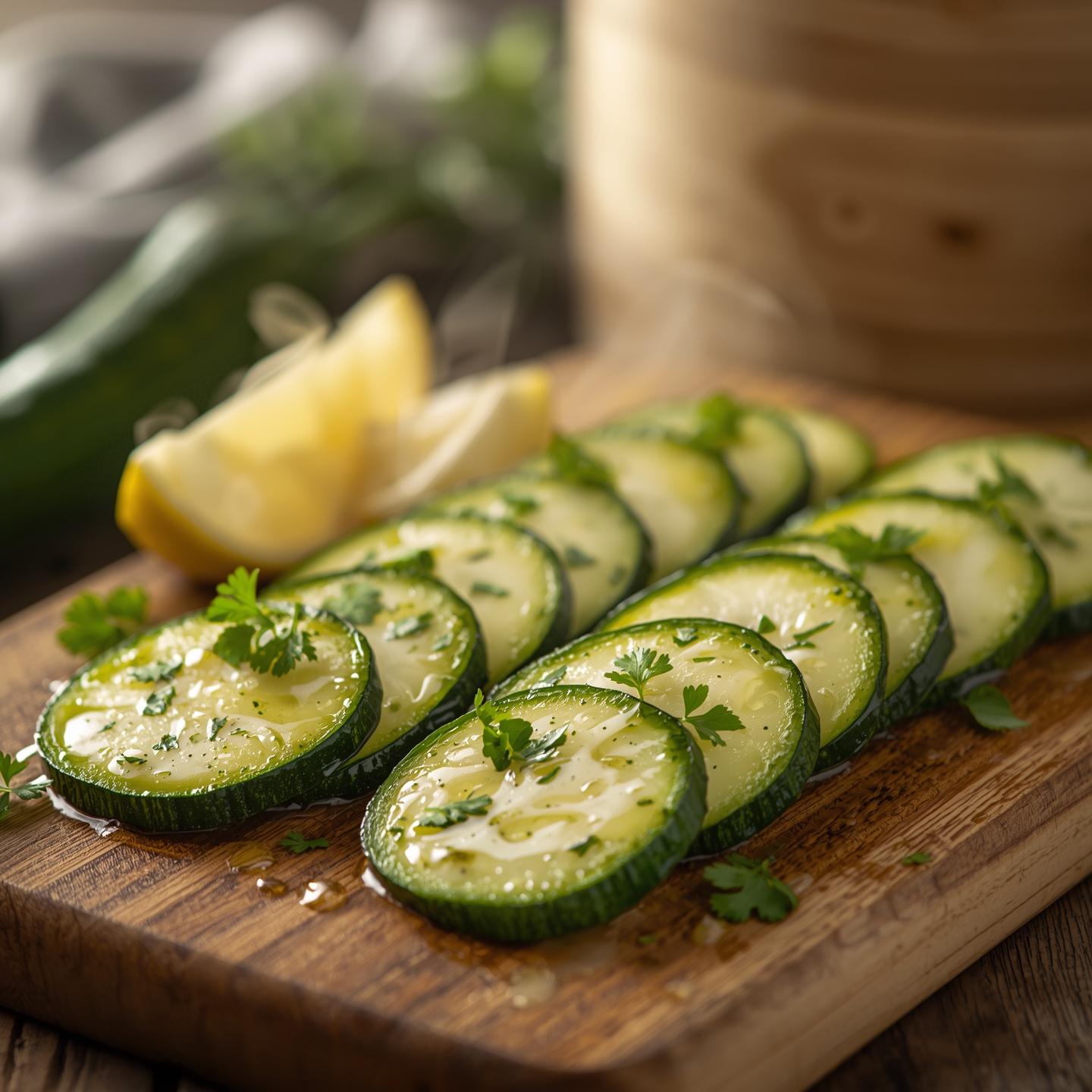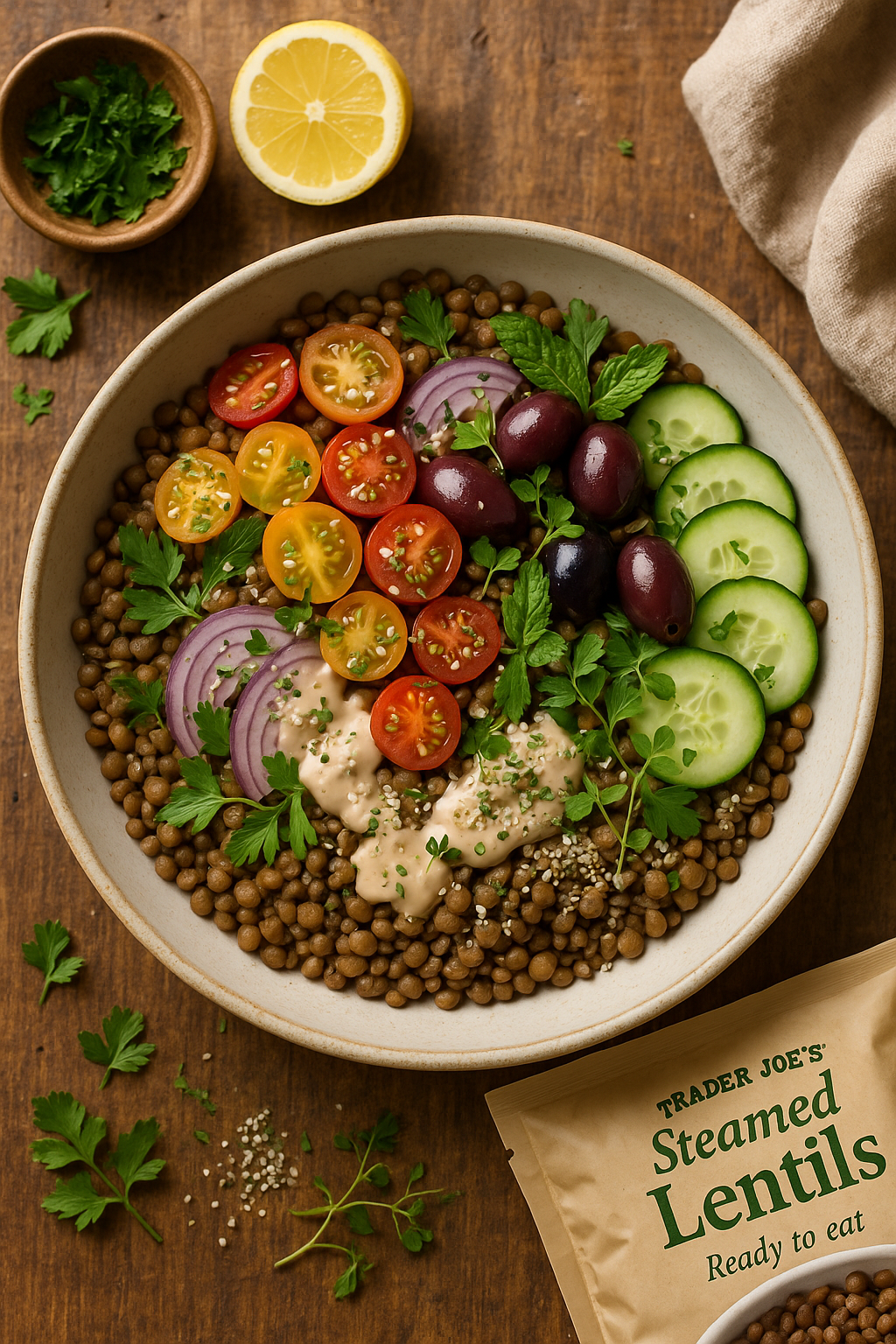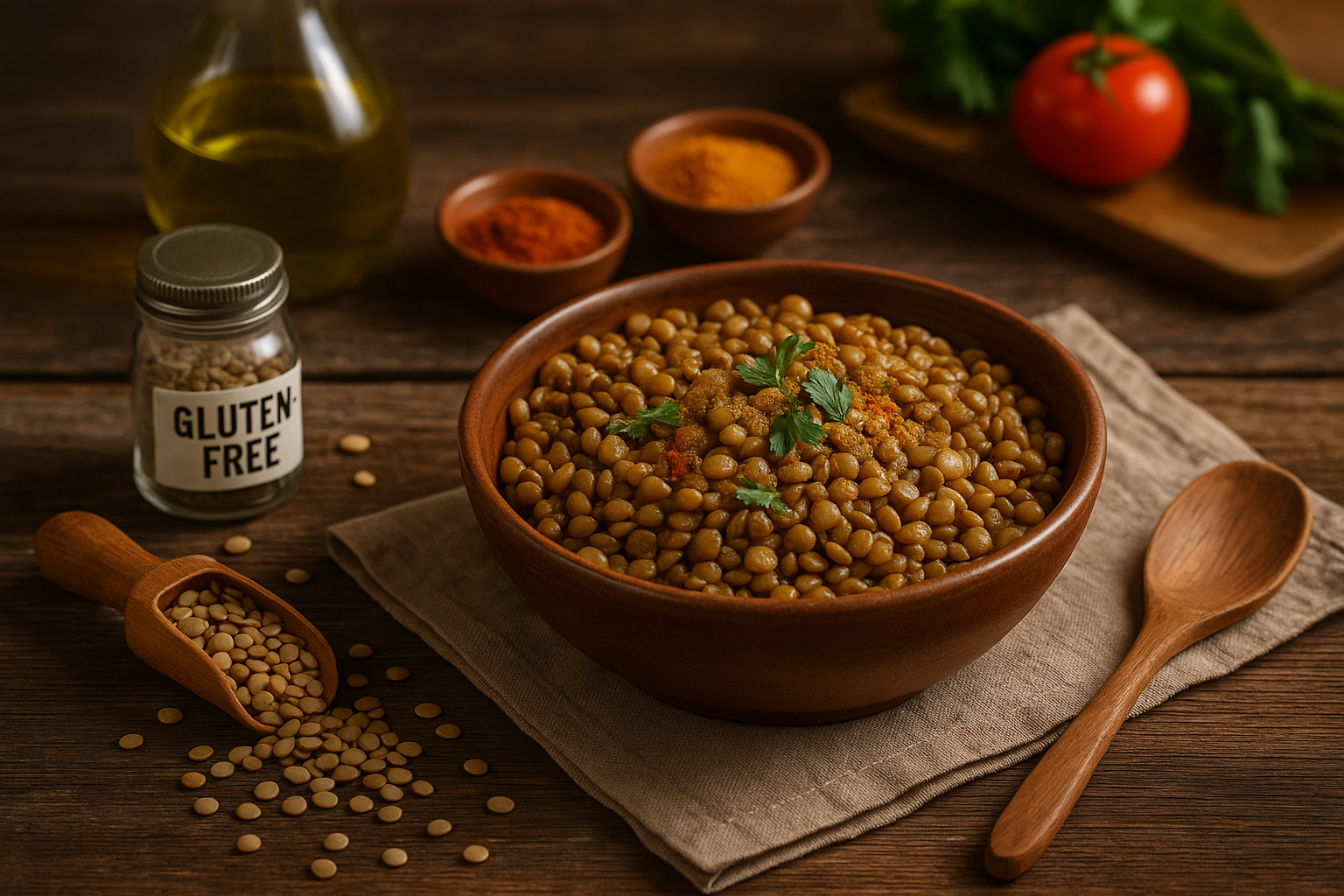When I first started exploring plant-based eating, I’ll admit I was overwhelmed by all the complicated recipes and expensive specialty ingredients. That’s when I discovered steamed zucchini – this simple summer squash became my gateway to effortless, nutritious meals that actually fit into my busy schedule.
What I love most about steamed zucchini is how it delivers exceptional nutritional value while requiring minimal preparation time. As someone who’s always juggling deadlines and commitments, I’ve found the gentle steaming process preserves zucchini’s delicate flavor and maximizes nutrient retention, supporting my wellness goals without compromising on taste.
Whether you’re just starting your plant-based journey like I was, or you’re an experienced home chef, I’ve learned some essential techniques over the years that can help you transform simple zucchini into consistently delicious, health-promoting meals.
The Nutritional Power of Steamed Zucchini
I was genuinely surprised when I first learned that steamed zucchini contains only 17 calories per 100 grams while delivering impressive amounts of essential vitamins and minerals. This low-calorie vegetable provides vitamin C for immune system support and skin health, vitamin A for eye health, and potassium which helps regulate blood pressure.
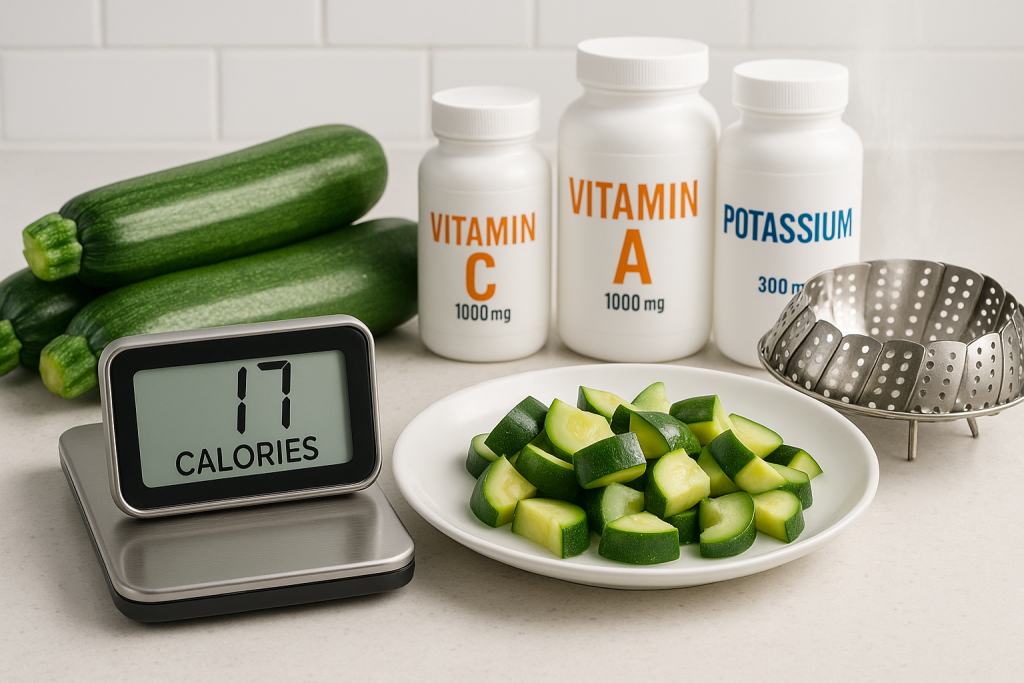
What really convinced me to make steamed zucchini a regular part of my meals was discovering how steaming preserves vital compounds while making them more bioavailable for absorption – something I didn’t get with my previous habit of just eating raw vegetables. The antioxidant profile includes lutein, zeaxanthin, and beta-carotene, which may help prevent cellular damage and support long-term health.
I’ve also noticed that the high water content and fiber help me feel satisfied without excess calories, and the gentle steamed preparation is much easier on my digestive system than raw zucchini used to be.
After years of trial and error, I’ve learned that achieving consistently excellent results doesn’t require expensive equipment. My go-to setup is a basic steamer basket that fits inside my existing pot – I prefer the collapsible metal versions because they work with different pot sizes I already own.
Essential Equipment for Perfect Edamame Preparation
Over the years, I’ve learned that you don’t need an arsenal of gadgets — but you do benefit from one well-chosen upgrade. For instance, once you outgrow makeshift colanders or tinfoil rigs, you’ll appreciate the OXO Good Grips Stainless Steel Steamer. It folds and expands to fit different pots and gives consistent steam circulation.

OXO Good Grips Stainless Steel Steamer With Extendable Handle
- Removable handle extends and locks into position for filling and transporting and retracts to accommodate pot lids while steaming
- Perfect for use with a pressure cooker or multicooker
- Handle hole for fork keeps hands away from steam
- Steamer fits pots 8” in diameter and up
When I’m visiting friends or traveling, I’ve discovered that a heat-proof colander placed over boiling water works perfectly when covered with a tight-fitting lid. I’ve even improvised successfully by placing a small inverted bowl in a pot with a plate on top when staying in rental kitchens with minimal equipment.
My must-have tools have become quality tongs for safe handling, a reliable timer to prevent overcooking, and glass containers for storage – they maintain freshness without absorbing flavors like some plastic containers do.
Versatile Cookware for Steam and Storage
I also love pairing it with a multipurpose vessel. My go-to is a Lodge Enameled Cast Iron Dutch Oven, which traps steam beautifully, retains heat, and doubles as a baking or braising pot on its off days.

Lodge 6 Quart Enameled Cast Iron Dutch Oven with Lid – Dual Handles – Oven Safe up to 500° F or on Stovetop – Use to Marinate, Cook, Bake, Refrigerate and Serve – Poppy
- YOUR GO-TO DUTCH OVEN: A flawless pairing of form and function that doesn’t quit. The Lodge Dutch Oven not only makes your kitchen look good but is an enameled cast iron classic great for preparing and serving memorable meals. Broil, braise, bake or roast your favorite meals in the oven up to 500 Degree F.
- WHAT IS PORCELAIN ENAMEL ON CAST IRON? It is glass that becomes bonded to the cast iron at high temperatures. A particulate of glass, called frit, is applied to the cast iron vessel and then baked at temperatures between 1200 and 1400° F. The glass frit melts and fuses to the cast iron, forming a bond. Porcelain enamel on cast iron is heat tolerant and impervious to water and other consumables.
- EASY TO COOK AND CLEAN: The porcelain enameled interior has a smooth finish that minimizes sticking, promotes caramelization and resists staining. Although enameled cast iron is dishwasher safe, hand washing with warm soapy water and a nylon scrub brush is recommended to keep your Dutch Oven in tip top shape.
- HEAT RETENTION: The cast iron vessel has superior heat distribution and retention, evenly heating throughout both the bottom and sidewalls. The tightly fitting lid seals in moisture for scrumptious pot roast, stews or a large batch of beans. Our heat retention also reduces the amount of energy needed for cooking.
My Perfect Steamed Zucchini Technique
After steaming hundreds of batches over the years, I’ve developed a reliable approach that starts with selecting firm, unblemished zucchini with bright green skin and moderate size. I’ve learned that huge zucchini often have tough seeds and watery texture, so I stick to medium-sized ones.
My preparation routine begins with thorough washing and trimming both ends, followed by cutting into uniform pieces – this consistency has been key to achieving even cooking. I use approximately one inch of water in the bottom of my pot, bringing it to a gentle boil before inserting the steamer basket.
Here’s what I’ve discovered works best: arrange zucchini pieces in a single layer, cover immediately, and reduce heat to maintain steady steam production. My timing has become intuitive after years of practice – 4-6 minutes for the tender-crisp texture that I prefer for side dishes, or 7-8 minutes when I plan to mash them into other dishes.
I test doneness by checking that the zucchini yields slightly to gentle pressure while retaining structural integrity. The fork test should reveal a tender interior without mushiness, and I look for that vibrant green color to remain largely intact.

Cutting Styles I’ve Mastered Over Time
Through experimentation, I’ve learned that different cutting styles dramatically influence both cooking time and final texture. My favorite approach for quick side dishes is quarter-inch rounds that cook evenly in 4-5 minutes – they look beautiful and work perfectly in salads too.
When I want something more elegant for dinner parties, I create half-moon slices by cutting rounds in half. For grain bowls and stir-fries, I’ve become fond of julienne strips that require only 3-4 minutes and integrate seamlessly after steaming.
For heartier dishes where I want more substantial pieces, I cut one-inch cubes that need 6-7 minutes but retain great structural integrity. I typically leave the skin on since it contains valuable nutrients and adds nice color contrast, though I do peel it when cooking for friends with sensitive digestion.
Getting consistent, uniform cuts is critical for even steaming. That’s why I use my Zwilling Pro Chef’s Knife — the sharpness and balance help me slice even quarter-inch rounds or clean julienne strips. It might feel like a splurge, but when your zucchini doesn’t go mushy or overcook, it pays off every time.

ZWILLING Original Pro Traditional Chef’s Knife, Silver/Black, 20 cm, 20 x 5 x 5 cm
- FRIODUR ice-hardened blade for exceptional durability of the cutting edge and corrosion resistance
- The two-level V-edge-grinding also provides for lasting sharpness and offers long-lasting highly precise cutting performance
- SIGMAFORGE knife – one-piece precision forging
- Blade material: Stainless Steel
Seasoning Adventures I’ve Enjoyed
Over the years, I’ve discovered that plant-based seasoning can transform simple steamed zucchini into exciting culinary experiences. My basic go-to combination includes sea salt, freshly cracked black pepper, and a drizzle of good olive oil applied immediately after cooking for maximum flavor absorption.
My Mediterranean phase led me to love combinations of dried oregano, basil, and fresh lemon juice – they create such bright, refreshing profiles. I’ve experimented with adding minced garlic to the steaming water, which infuses subtle aromatic qualities throughout the vegetable.
One technique I particularly enjoy is introducing fresh herbs like thyme or rosemary during the final minute of cooking to preserve their potent flavors. Nutritional yeast has become a favorite addition for umami depth and B-vitamin enhancement.
I’ve learned through experience that timing matters crucially – salt and acid-based seasonings work best applied after cooking to prevent texture deterioration, while oil-soluble herbs and spices can be added during steaming. Some of my favorite discoveries include ginger slices in the steaming water for subtle warmth, or bay leaves for earthy complexity.
Creative Steamed Zucchini Serving Ideas
My approach to building complete meals centers around integrating this versatile vegetable with whole grains for satisfying, nutritionally-balanced dishes. I love pairing warm steamed zucchini with quinoa, brown rice, or farro – the complementary textures and flavors work beautifully together.
Some of my favorite combinations feature legumes like lentils, chickpeas, or black beans for protein-rich foundations. I’ve become quite fond of tahini-based dressings and cashew cream sauces that elevate the vegetable while keeping everything plant-based.
My Mediterranean-inspired presentations combine steamed zucchini with olives, sun-dried tomatoes, and fresh basil, while my Asian-inspired preparations feature sesame oil, rice vinegar, and toasted sesame seeds. I love how zucchini’s mild flavor serves as an excellent canvas for bold spice blends like za’atar or everything bagel seasoning.
My Go-To Recipe That Never Fails
Simple Plant-Based Steamed Zucchini
This is the recipe I return to again and again, especially when introducing friends to this preparation method:
Ingredients:
- 2 medium zucchini (about 1 pound)
- 1 tablespoon extra-virgin olive oil
- 1/2 teaspoon sea salt
- 1/4 teaspoon freshly ground black pepper
- 2 tablespoons fresh lemon juice
- 2 cloves garlic, minced
- 2 tablespoons fresh parsley, chopped
- Optional: 1 tablespoon nutritional yeast
My Method:
- Wash zucchini thoroughly and trim ends
- Cut into 1/4-inch rounds for even cooking
- Bring 1 inch water to boil in steamer pot
- Place zucchini in steamer basket in single layer
- Cover and steam for 5-6 minutes until tender-crisp
- Remove immediately and transfer to serving bowl
- Drizzle with olive oil and lemon juice while warm
- Season with salt, pepper, and minced garlic
- Garnish with fresh parsley and nutritional yeast if desired
This recipe delivers approximately 45 calories per serving with excellent vitamin C, potassium, and antioxidants. I store leftover portions in the refrigerator for up to 3 days and reheat gently to preserve texture.
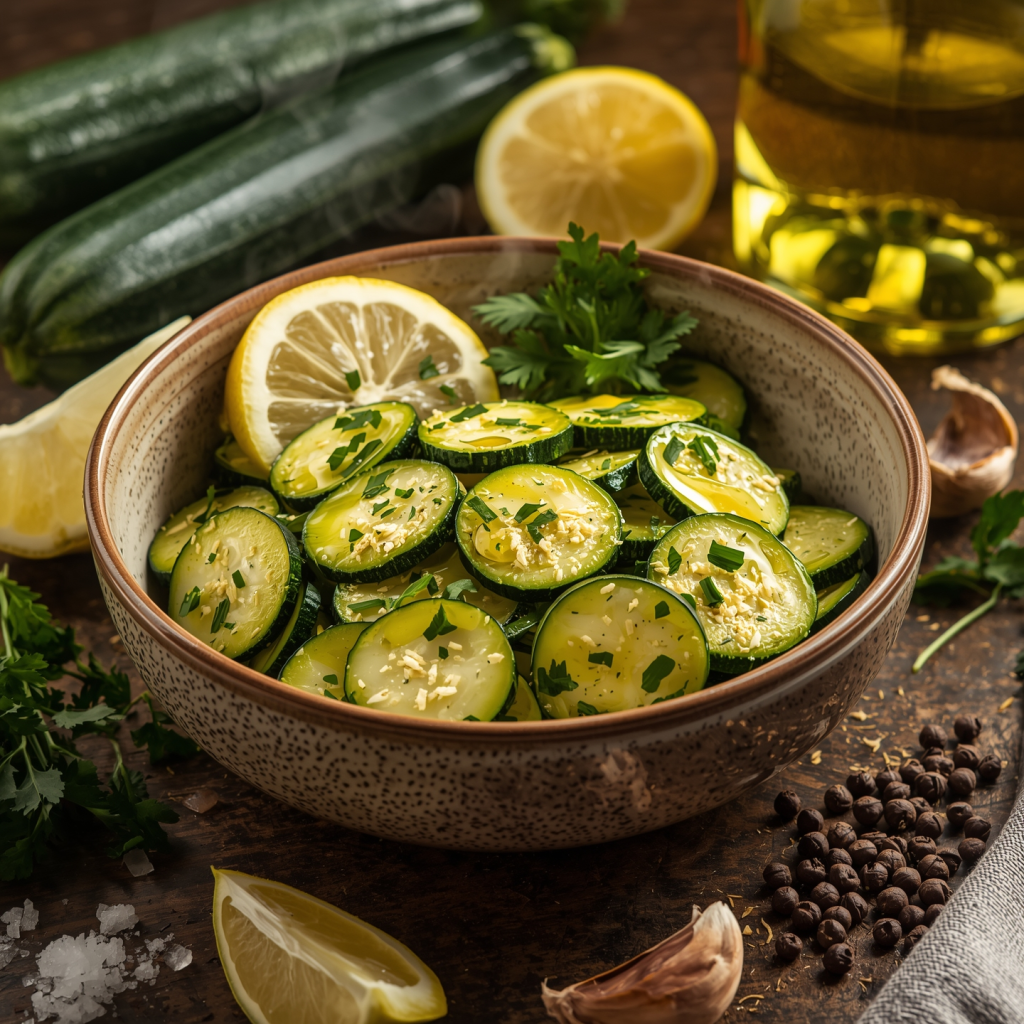
Storage Strategies I’ve Perfected
My storage routine begins immediately after cooking. I’ve learned that proper cooling and container selection preserve both texture and nutritional value for several days. I always allow the vegetables to cool completely before refrigerating in airtight glass containers.
My meal prep routine involves batch cooking larger quantities on weekends, providing convenient additions to weekday meals. I’ve found that properly stored steamed zucchini maintains quality for 3-4 days in the refrigerator.
For longer storage, I portion servings for freezing up to 2 months, though I’ve accepted that texture becomes softer upon thawing. My reheating approach prioritizes gentle methods – brief re-steaming or warming in a covered pan with minimal additional water prevents mushiness.
Troubleshooting From My Experience
Through countless batches, I’ve encountered and solved most common challenges. Texture issues typically stem from timing miscalculations or inadequate steam circulation – I’ve learned to focus on precise monitoring and proper equipment setup.
When I’ve overcooked batches, I’ve learned that mushy, unappetizing vegetables result from too much time and infrequent doneness testing. For underseasoned results, I add flavors post-cooking since steamed vegetables readily absorb seasonings when applied while still warm.
Uneven cooking usually indicates inconsistent cutting sizes – something I’ve become much more careful about over time. When zucchini becomes watery, I gently blot excess moisture with paper towels before seasoning and serving.
I’ve discovered that bland flavors improve dramatically with acid additions like lemon juice or vinegar, which brighten natural vegetable flavors. For equipment challenges, I use smaller pot sizes for better steam concentration, or add more water if steam production decreases during cooking.
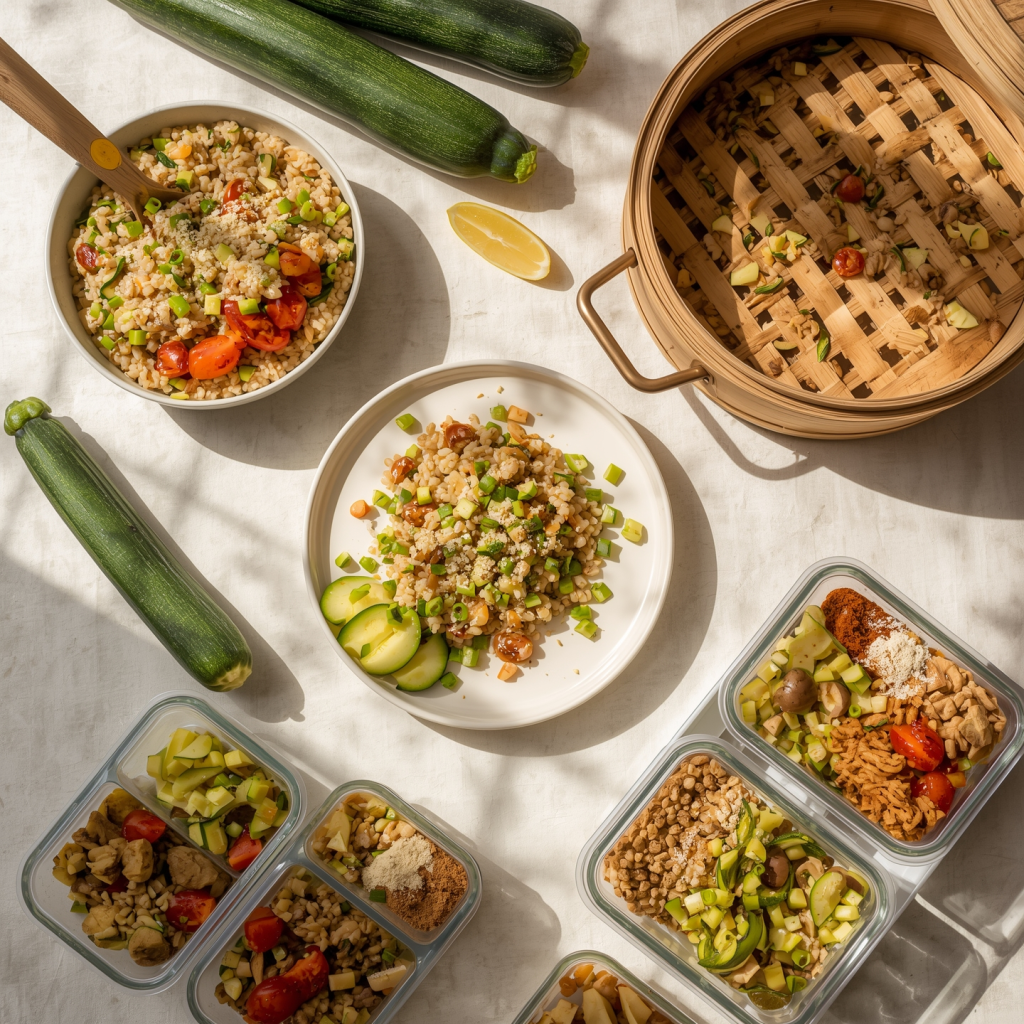
Embracing the Simplicity I’ve Found
After years of incorporating steamed zucchini into my routine, I can confidently say that mastering this technique has opened the door to effortless, nutritious plant-based eating that fits seamlessly into any lifestyle. This humble summer squash has proven to me that exceptional nutrition doesn’t require complicated techniques or expensive ingredients.
What I love most is the remarkable adaptability – whether I’m crafting a simple weeknight side dish or building protein-rich grain bowls for meal prep, this foundation technique serves countless applications. At only 17 calories per 100 grams, it delivers impressive nutritional value that supports my overall wellness goals.
From basic steamer basket setups to creative seasoning blends, the techniques I’ve shared ensure consistently delicious results that make plant-based eating both enjoyable and sustainable. The batch cooking capabilities have eliminated my “no time for healthy eating” excuse, while the troubleshooting strategies I’ve learned guarantee success.
I encourage you to start with my basic recipe, then experiment with different cutting styles, seasonings, and serving combinations to discover your own preferences. Each batch offers an opportunity to refine your technique while nourishing your body with wholesome, plant-based nutrition.
Ready to transform your meals? Pick up fresh zucchini on your next grocery trip and try my basic steamed zucchini recipe this week. I’d love to hear about your creative seasoning combinations and favorite serving ideas in the comments below – sharing discoveries is what makes this plant-based journey so rewarding!
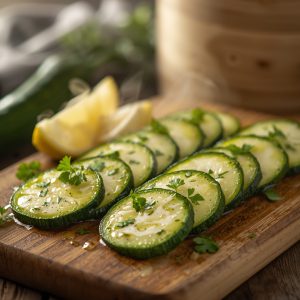
*We may earn a commission for purchases made using our links. Please see our disclosure to learn more.

